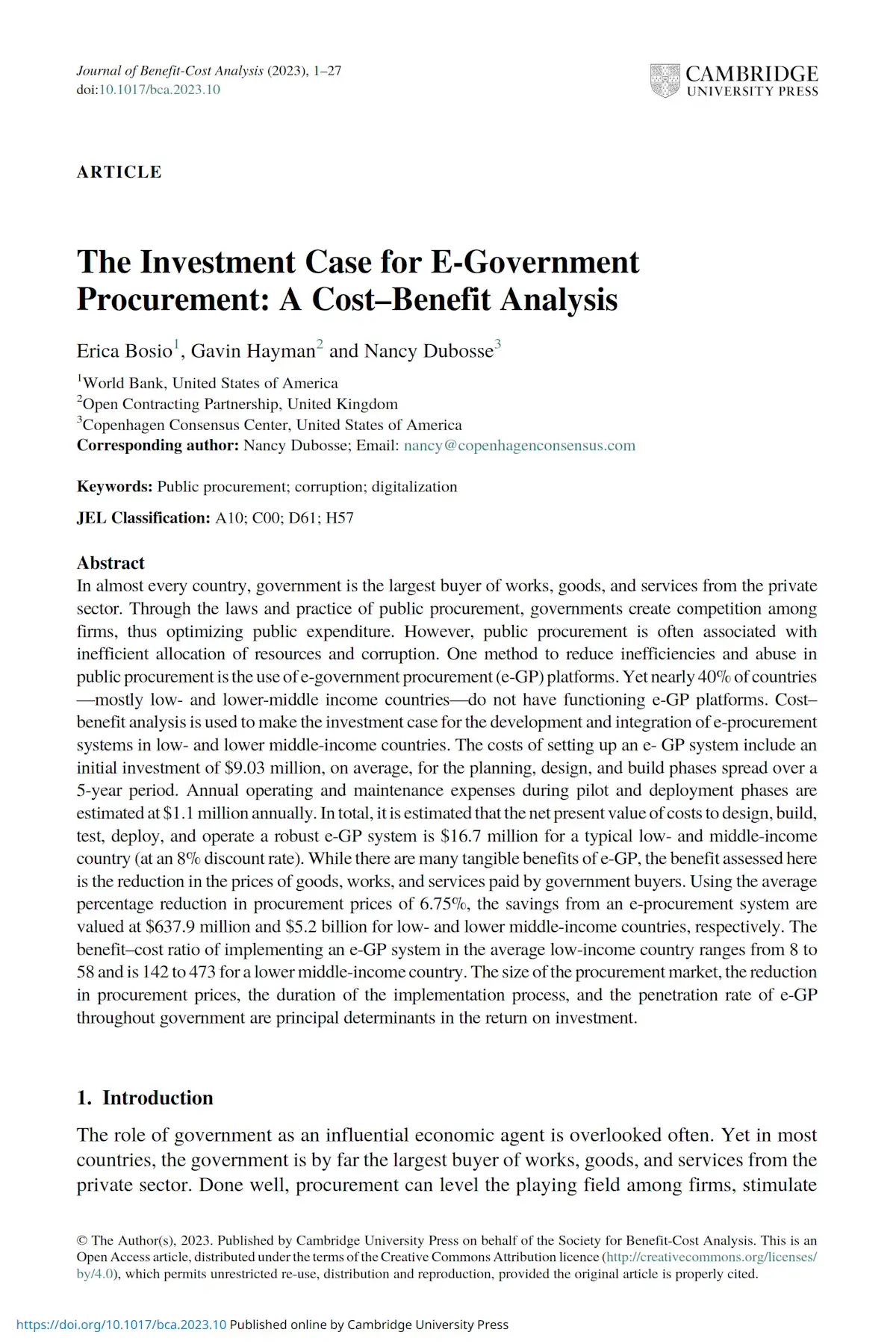Halftime for SDGs: e-Government Procurement
Best Investment Paper
In almost every country, the government is the largest buyer of works, goods, and services from the private sector. Through the laws and practice of public procurement, governments create competition among firms, thus optimizing public expenditure. However, public procurement is often associated with inefficient allocation of resources and corruption.
One method to reduce inefficiencies and abuse in public procurement is the use of e-government procurement platforms. Yet nearly 40% of countries—mostly low- and lower-middle income countries—do not have functioning e-government procurement platforms.
Cost-benefit analysis is used to make the investment case for the development and integration of e-procurement systems in low- and lower-middle income countries. The costs of setting up an e-government procurement (e-GP) system include an initial investment of $9.03 million, on average, for the planning, design, and build phases spread over a five-year period. Annual operating and maintenance expenses during pilot and deployment phases are estimated at $1.1 million annually. In total, it is estimated that the net present value of costs to design, build, test, deploy, and operate a robust e-GP system is $16.7 million for a typical low- and middle-income country (at an 8% discount rate).
The final peer-reviewed published article can be found here:


